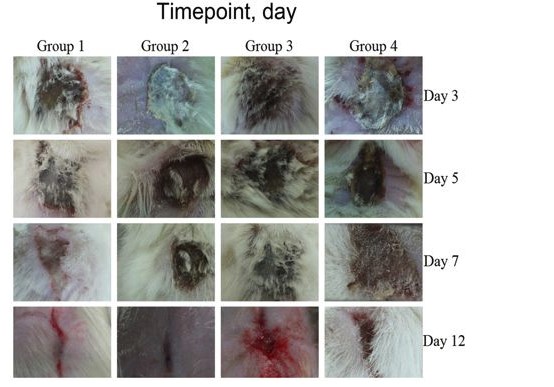Authors: Seisenbaeva G. A. , Fromell K., Vinogradov V. V., Terekhov A. N. , Pakhomov A. V. , Nilsson B., Nilsson Ekdahl K., Vinogradov V.V., Kessler V. G.

Abstract
Burn wounds are one of the most important causes of mortality and especially morbidity around the world. Burn wound healing and skin tissue regeneration remain thus one of the most important challenges facing the mankind. In the present study we have addressed this challenge, applying a solution-stabilized dispersion TiO2 nanoparticles, hypothesizing that their ability to adsorb proteins will render them a strong capacity in inducing body fluid coagulation and create a protective hybrid material coating. The in vitro study of interaction between human blood and titania resulted at enhanced TiO2concentrations in formation of rather dense gel composite materials and even at lower content revealed specific adsorption pattern initiating the cascade response, promising to facilitate the regrowth of the skin. The subsequent in vivo study of the healing of burn wounds in rats demonstrated formation of a strongly adherent crust of a nanocomposite, preventing infection and inflammation with quicker reduction of wound area compared to untreated control. The most important result in applying the TiO2 dispersion was the apparently improved regeneration of damaged tissues with appreciable decrease in scar formation and skin color anomalies.
DOI: s41598-017-15792-w
Read Full: